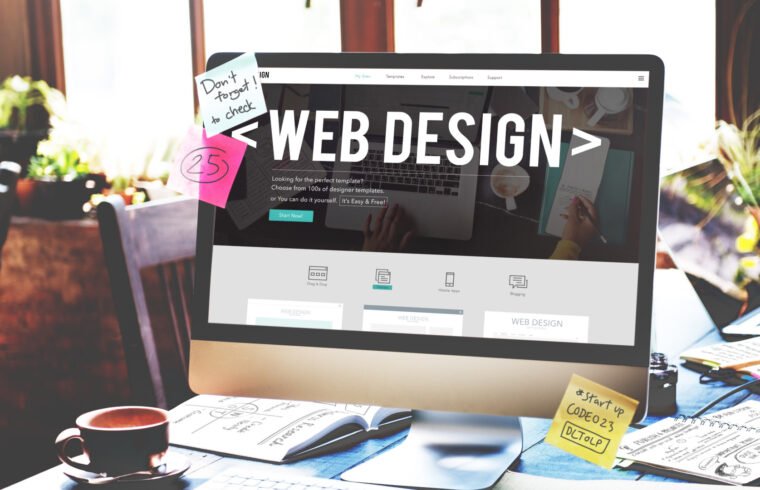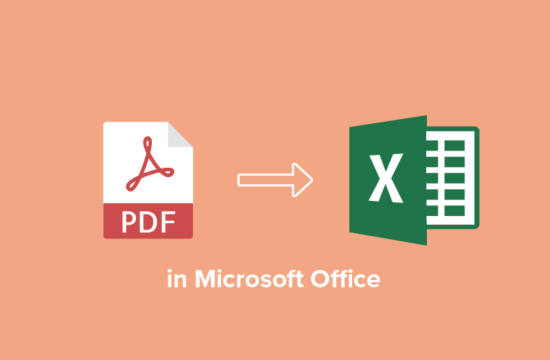Web design is a crucial part of any online presence, whether it’s for a personal blog, a business website, or an e-commerce platform. It involves creating the visual layout, structure, and user experience of a website. A well-designed website is easy to navigate, visually appealing, and functional, which encourages users to stay longer and engage more with your content. Whether you’re just starting out in web design or you’re a seasoned professional, understanding the core elements and current trends is essential for creating a successful website. This guide covers the basics, common mistakes to avoid, and tips for both beginners and experienced web designers.
Introduction to Web Design
What is Web Design?
Web design is the process of planning and creating the visual aspects of a website. It involves combining various elements such as color schemes, layouts, fonts, images, and graphics to produce a cohesive, user-friendly interface. Web design is not just about making a site look good; it’s about ensuring the site functions smoothly, is easy to navigate, and offers a great user experience (UX). A good design makes it easier for visitors to find information, interact with the content, and complete their desired actions—whether that’s making a purchase, reading a blog post, or signing up for a service.
Why Web Design is Important for Websites
The importance of web design cannot be overstated. When users visit a website, the first thing they notice is its design. Research shows that people form opinions about a website in less than 50 milliseconds. If the site looks unprofessional or is hard to navigate, visitors are likely to leave and search for alternatives. Good web design, on the other hand, keeps users engaged and encourages them to explore more. For businesses, this directly translates into higher conversion rates, improved customer retention, and better brand perception. Web design also plays a key role in search engine optimization (SEO), helping a site rank higher on search engines.
Overview of Web Design Basics
At the heart of web design are several fundamental principles that guide the creation of a website. These include consistency, balance, contrast, alignment, and proximity. Consistency ensures a seamless experience by using uniform colors, fonts, and layout elements throughout the site. Balance refers to distributing design elements evenly on the page, so the site feels organized. Contrast helps important content stand out, while alignment and proximity make the site visually structured and easy to scan. Understanding these principles is essential for creating a design that not only looks good but also performs well for users.
Key Elements of Web Design
Layout and Structure
The layout and structure of a website determine how its content is arranged and presented to users. A good layout ensures that the content is organized in a logical manner, guiding users through the page without confusion. Common types of layouts include grid-based, single-column, and multi-column designs. The layout should also prioritize the most important information, such as headlines, calls to action, and key content. A clear structure helps users navigate the site easily, leading to a better overall user experience. It’s also important to ensure that the design works well on all devices, which brings us to responsive web design.
Color Scheme and Typography
Color schemes and typography are essential for creating an aesthetically pleasing and readable website. Colors can evoke certain emotions and influence user behavior, so it’s important to choose a palette that aligns with the brand’s identity and the purpose of the website. For instance, blue can communicate trust, while red can evoke urgency. Typography, on the other hand, affects readability. Using easy-to-read fonts and maintaining proper line spacing and font sizes ensures visitors can quickly digest the information on your site. Pairing complementary fonts for headers and body text adds visual appeal without overwhelming the user.
Navigation and User Experience (UX)
Navigation is one of the most critical aspects of Web Design. Users need to be able to find what they’re looking for without frustration. A simple, intuitive navigation menu is essential for guiding visitors to different parts of the site. The layout of the navigation should be logical, with categories and subcategories clearly defined. UX design is closely tied to navigation, focusing on creating a seamless and enjoyable experience for the user. Good UX design involves understanding the needs of your audience and ensuring that the website is easy to use, responsive, and accessible. A positive user experience encourages return visits and boosts engagement.
Mobile-Friendly Design
In today’s digital age, more and more users are browsing the web on mobile devices. As such, mobile-friendly design has become a necessity. A mobile-friendly website adjusts its layout and elements to fit smaller screens, ensuring that users have a positive experience regardless of their device. This includes using larger buttons, smaller images, and designing pages that load quickly. A responsive design is the most effective way to create a mobile-friendly website, as it automatically adjusts to different screen sizes. Since mobile search is becoming increasingly important for SEO, having a mobile-friendly site can help improve your rankings on search engines like Google.
Types of Web Design
Static vs. Dynamic Web Design
There are two main types of web design: static and dynamic. Static web design involves fixed, unchanging content that remains the same every time a user visits the website. This type of design is often used for simple websites like portfolios or landing pages. Dynamic web design, on the other hand, allows content to change based on user interactions, time, or other factors. Dynamic websites are often used for blogs, e-commerce sites, and social media platforms. They offer a more personalized user experience and allow for regular content updates.
Responsive vs. Adaptive Design
Both responsive and adaptive web design are aimed at providing optimal user experiences across different devices, but they do so in different ways. Responsive design uses flexible layouts that automatically adjust to the screen size, making the site adaptable to any device. Adaptive design, however, uses multiple fixed layouts for different devices, such as smartphones, tablets, and desktops. While responsive design offers more flexibility, adaptive design can provide a more tailored experience for specific device types. Both approaches are effective for creating a mobile-friendly website, but responsive design is generally preferred due to its ability to scale across all devices.
Single-Page vs. Multi-Page Websites
Single-page websites contain all content on one page, where users scroll down to view different sections. This type of design is ideal for simple websites like portfolios, event pages, or product landing pages. Multi-page websites, on the other hand, spread content across multiple pages, allowing for more in-depth information. These websites are better suited for businesses, blogs, or e-commerce sites that need to present a large amount of content. While single-page websites are simpler and faster to load, multi-page websites offer more flexibility in terms of content organization and navigation.
The Role of a Web Designer
Skills Required for Web Designers
Web design requires a blend of technical and creative skills. A web designer should be proficient in design tools like Adobe Photoshop, Illustrator, and Figma, as well as coding languages like HTML, CSS, and JavaScript. An understanding of responsive design principles, UX/UI design, and SEO is also crucial. Beyond technical skills, a web designer should have a good eye for design, including knowledge of color theory, typography, and layout principles. Problem-solving skills are also important, as designers often need to come up with creative solutions to improve user experience or solve functional issues.
Tools and Software Used in Web Design
Web designers rely on a variety of tools and software to create and optimize websites. Adobe Photoshop and Illustrator are widely used for creating graphics and images. Figma and Sketch are popular for creating wireframes and prototypes, while InVision and Marvel help designers collaborate and test their designs. For coding, designers often use text editors like Sublime Text, VS Code, or Atom. Design software like Webflow and WordPress also allow for visual web design without the need to write code. These tools enable designers to create visually appealing, functional, and user-friendly websites.
How Web Designers Collaborate with Developers
Web designers often work closely with web developers to bring a design to life. While designers focus on the visual aspects of the site, developers handle the coding and functionality. Collaboration is crucial, as the designer’s vision needs to be translated into a working website. Designers create wireframes and prototypes that developers use as a blueprint. Communication between the two ensures that the final product is both visually appealing and functional. Additionally, designers must ensure that their designs are technically feasible, and developers need to ensure that the site’s performance and load times are optimized.
Web Design Trends to Watch in 2025
Minimalistic Design
In 2025, minimalistic design is expected to continue its popularity. This design approach focuses on simplicity, with a clean layout, lots of white space, and limited use of elements. Minimalistic design aims to highlight the most important content and improve user experience by reducing distractions. This trend works particularly well on mobile devices, where screen space is limited. It also improves load times, which is crucial for both user experience and SEO. Brands are embracing minimalism to create modern, elegant websites that offer a seamless browsing experience.
Dark Mode and Color Trends
Dark mode has become increasingly popular in recent years, and it’s expected to continue in 2025. Dark mode is easier on the eyes, especially in low-light environments, and can help reduce battery consumption on mobile devices. Websites incorporating dark mode offer an alternative to traditional light backgrounds, and many brands are experimenting with dark themes for a sleek, modern look. Alongside dark mode, color trends in web design are shifting toward more muted tones, with gradients and vibrant accent colors making an appearance for emphasis and visual appeal.
AI and Automation in Web Design
Incorporating AI and automation in web design is a trend that’s gaining momentum. AI-powered tools are already helping designers automate repetitive tasks like resizing images, generating layouts, and personalizing content. AI can also be used for user behavior analysis, allowing web designers to optimize websites based on data-driven insights. As AI technology advances, it will continue to shape the future of web design, making it easier and faster to create websites that are both visually appealing and highly functional.
Interactive and Immersive Web Experiences
Websites in 2025 will increasingly offer interactive and immersive experiences. Designers are experimenting with animations, 3D graphics, and virtual reality (VR) elements to engage users in new ways. Interactive elements like quizzes, polls, and chatbots are becoming standard features on websites, enhancing user engagement and providing personalized experiences. As technology continues to evolve, these interactive experiences will become even more sophisticated, creating unique, memorable interactions for users.
Common Web Design Mistakes to Avoid
Poor Navigation
One of the most common mistakes in web design is poor navigation. If users can’t find what they’re looking for, they will leave the site. Navigation should be simple, intuitive, and easy to locate. It’s important to ensure that menus are organized logically and that each link leads to relevant content. Avoid overcrowding the navigation bar with too many options, and ensure that all links are easy to understand.
Slow Load Times
Website load time is a crucial factor in user experience. Slow-loading websites can frustrate users and cause them to abandon the site before it even fully loads. To avoid this, designers should optimize images, reduce unnecessary scripts, and use caching techniques. Fast load times are also essential for SEO, as search engines like Google consider page speed as a ranking factor.
Overuse of Animation and Graphics
While animations and graphics can enhance a website, overusing them can have the opposite effect. Too many animations or heavy graphics can slow down load times and distract from the main content. It’s important to strike a balance between visual appeal and functionality, ensuring that the website remains fast and easy to navigate. Keep animations subtle and use graphics strategically to emphasize key points.
Ignoring Mobile Optimization
In today’s mobile-first world, ignoring mobile optimization is a major mistake. If a website isn’t mobile-friendly, users will have difficulty navigating it on their phones, leading to a poor user experience. Designers should always prioritize mobile optimization, using responsive design techniques to ensure that the site looks and functions well on smartphones and tablets.
How to Get Started with Web Design
Learning Resources for Beginners
If you’re new to web design, there are plenty of resources available to help you get started. Websites like Codecademy and freeCodeCamp offer free coding lessons, while platforms like Udemy and Coursera have affordable courses on design principles and web development. There are also many tutorials and blogs online that cover everything from basic HTML to advanced web design techniques. Start with the basics, such as learning HTML and CSS, then move on to more complex topics like JavaScript and UX design.
Web Design Courses and Tutorials
Online courses and tutorials are an excellent way to gain hands-on experience in web design. Platforms like Skillshare, LinkedIn Learning, and Treehouse offer courses that cater to both beginners and advanced designers. Many of these courses include practical projects, allowing you to apply your skills and build a portfolio. Tutorials on YouTube and design blogs are also valuable resources for learning specific tools and techniques.
Practice Projects to Build Your Portfolio
Building a portfolio is crucial for aspiring web designers. Start by taking on small, practice projects, such as designing a personal website or creating a mock-up for a fictional business. These projects will help you develop your skills and give you something to showcase to potential clients or employers. As you gain more experience, you can take on more complex projects and continue expanding your portfolio.
Conclusion
The future of web design is exciting, with new technologies and trends emerging every year. Designers will continue to push the boundaries of creativity while focusing on creating seamless, engaging user experiences. AI, virtual reality, and interactive web elements will play an increasingly important role in shaping the way websites are designed and experienced.




